Inside The New York Botanical Garden
Esther Jackson
Posted in From the Library on October 26 2018, by Esther Jackson
Esther Jackson is the Public Services Librarian at NYBG’s LuEsther T. Mertz Library where she manages Reference and Circulation services and oversees the Plant Information Office. She spends much of her time assisting researchers, providing instruction related to library resources, and collaborating with NYBG staff on various projects related to Garden initiatives and events.
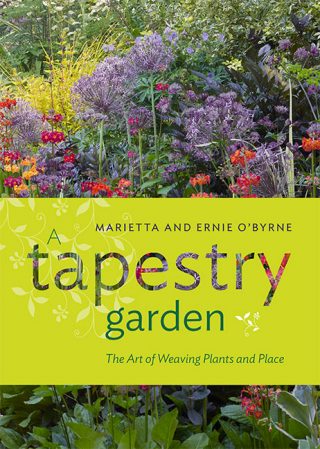 Three new books in the Mertz Library show readers the breadth of possibilities available to the home gardener, from place, to ponds, to planting.
Three new books in the Mertz Library show readers the breadth of possibilities available to the home gardener, from place, to ponds, to planting.
A Tapestry Garden: The Art of Weaving Plants and Place (2018) by Marietta and Ernie O’Byrne (co-owners of Northwest Garden Nursery in Eugene, Oregon) is a lovely collection of photographs and plant recommendations. Eye candy for those who are in search of new planting ideas, Tapestry Garden radiates with the authors’ love of plants as their personal stories which accompany the featured flora. The authors offer a palette of plants both native to the Pacific Northwest and from other regions of the world, with an emphasis on cultivated varieties. An eclectic, sometimes stream-of-consciousness narrative is a departure from more structured “how-to” gardening books, and invites readers to engage with the authors’ gardening philosophy and favorite plants.
Read More
Posted in From the Library on October 18 2018, by Esther Jackson
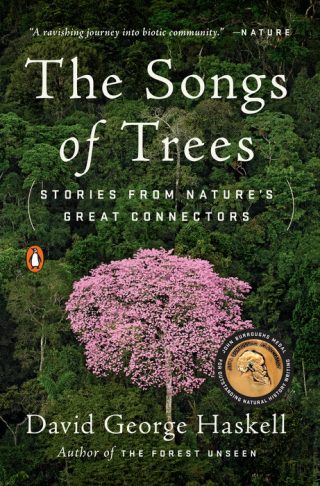 The Songs of Trees: Stories from Nature’s Great Connectors is the second book from David George Haskell, also the author of The Forest Unseen. In The Songs of Trees, Haskell explores the worlds of different trees in different corners of the world, ruminating on their existences and relationships to the organisms and environments around them.
The Songs of Trees: Stories from Nature’s Great Connectors is the second book from David George Haskell, also the author of The Forest Unseen. In The Songs of Trees, Haskell explores the worlds of different trees in different corners of the world, ruminating on their existences and relationships to the organisms and environments around them.
Although The Songs of Trees is in the genre of popular nature writing, it is challenging to find a description that is fitting for the whole book. The most appropriate summation I arrived at is that it would be a wonderful book to read out loud, or to hear someone read. Haskell loves words and literary devices as well as music, and his prose has been crafted for lyricism. The Songs of Trees is Aldo Leopold meets Henry David Thoreau with bigger words and more people in the nature scenes. In its best moments, it is reminiscent of John McGahern.
In The Songs of Trees, Haskell visits 12 trees around the world: ceibo, balsam fir, sabal palm, green ash, hazel, redwood, ponderosa pine, cottonwood, callery pear, olive, and Japanese white pine. For me, perhaps ironically, the most compelling passages were about animals, including an aside about rattlesnakes in Tennessee. However, different readers will connect with different chapters. As with certain other books of essays, The Songs of Trees is eclectic, and therefore difficult to read in a single sitting. Excerpted chapters are appropriate for book clubs, creative writing classes, or citizen scientists and naturalists.
Read The Songs of Trees for a book that plays with the English language, using trees and nature as its device.
Posted in From the Library on October 11 2018, by Esther Jackson
Esther Jackson is the Public Services Librarian at NYBG’s LuEsther T. Mertz Library where she manages Reference and Circulation services and oversees the Plant Information Office. She spends much of her time assisting researchers, providing instruction related to library resources, and collaborating with NYBG staff on various projects related to Garden initiatives and events.
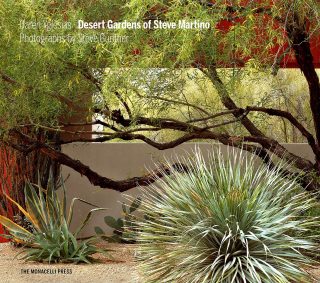 Three new books in the LuEsther T. Mertz Library will inspire readers to embrace desert landscapes and plants.
Three new books in the LuEsther T. Mertz Library will inspire readers to embrace desert landscapes and plants.
Desert Gardens of Steve Martino (2018) is a lavish ode to the landscapes of the landscape designer Steve Martino. Authored by Caren Yglesias, a licensed architect and lecturer in landscape architecture and environmental planning at UC Berkeley, with photographs by Steve Gunther, the book is well-designed and executed. Because of their artistic nature, some of the photo-documentation abstracts the designs of the gardens; it is helpful that each garden includes a site plan that illustrates the layout of the site in more measured detail. Twenty-one of Martino’s gardens in the American southwest are treated. Martino, who focuses on using plants that are native to the Sonoran region, creates gardens that are evocative of the desert from which they spring. East coast gardeners and designers may not look to Martino for practical landscape design inspiration, owing to the differences in climates. However, his use of structure and color can be universally enjoyed by those who create, maintain, and appreciate garden landscapes.
Read More
Posted in From the Library on October 4 2018, by Esther Jackson
Esther Jackson is the Public Services Librarian at NYBG’s LuEsther T. Mertz Library where she manages Reference and Circulation services and oversees the Plant Information Office. She spends much of her time assisting researchers, providing instruction related to library resources, and collaborating with NYBG staff on various projects related to Garden initiatives and events.
[Not a valid template]
Gardenlust: A Botanical Tour of the World’s Best New Gardens by Christopher Woods for Timber Press is a seductive new title introducing readers to 50 new and exciting modern gardens throughout the world. Woods, former director and chief designer at Chanticleer, with an impressive horticultural resume, offers readers profiles of 50 gardens that have opened in the last 18 years. Although Woods cautions that his choices are personal, the contemporary gardens and landscapes featured are unequivocally appealing although their designs are quite diverse.
Two of the noteworthy gardens featured are Vallarta Gardens in Mexico and the Naples Botanical Garden in Florida, pictured here. My personal favorite, possibly because it is so striking, is The Orpheus Project at Boughton House. Certainly, different readers will have affinity for different gardens. Regardless of which gardens inspire the most awe in any individual reader, most if not all will feel the tug of wanderlust and the gardenlust to explore many of these new and beautiful landscapes.
Posted in From the Library on September 27 2018, by Esther Jackson
Esther Jackson is the Public Services Librarian at NYBG’s LuEsther T. Mertz Library where she manages Reference and Circulation services and oversees the Plant Information Office. She spends much of her time assisting researchers, providing instruction related to library resources, and collaborating with NYBG staff on various projects related to Garden initiatives and events.
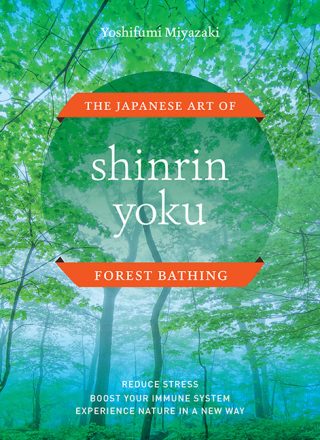 Shinrin-yoku, “forest bathing” in English, is definitely having a moment. Shinrin-Yoku: The Japanese Art of Forest Bathing is a new book on the discipline written by Yoshifumi Miyazaki for Timber Press. Miyazaki, a university professor, researcher, and the deputy director of Chiba University’s Centre for Environment, Health and Field Sciences, has researched forest bathing since 1990, and has published several books on the effects and benefits of forest therapy.
Shinrin-yoku, “forest bathing” in English, is definitely having a moment. Shinrin-Yoku: The Japanese Art of Forest Bathing is a new book on the discipline written by Yoshifumi Miyazaki for Timber Press. Miyazaki, a university professor, researcher, and the deputy director of Chiba University’s Centre for Environment, Health and Field Sciences, has researched forest bathing since 1990, and has published several books on the effects and benefits of forest therapy.
The term shinrin-yoku was coined in 1982 and refers to the practice of walking through the woods and experiencing nature. Specifically, practitioners enjoy nature at a leisurely pace, “bathing” in the natural environment and benefiting from lowered stress levels and a heightened sense of well-being. Japanese researchers have been measuring the positive effects of shinrin-yoku for decades, attempting to quantify both chemicals and perceptions—a difficult task. (For more information about the research surrounding shinrin-yoku, see Amitah Kalaichandran’s recent article from The New York Times.)
For those who are interested in giving shinrin-yoku a try, Miyazaki’s book is an excellent introduction. Chapter titles include “The Concept of Nature Therapy,” “Japan’s Relationship with Nature,” “The Practice of Shinrin-yoku,” “Bringing the Forest Closer to Home,” “The Science Behind Nature Therapy,” and “The Future of Forest Therapy Research.” NYBG also offers classes for those who would prefer a more hands-on instruction.
See also: NYBG volunteer Jeanne Lapsker’s Plant Talk blog on shinrin-yoku from 2015 and my Forest Bathing book review from earlier this year.
Posted in From the Library on September 20 2018, by Esther Jackson
Esther Jackson is the Public Services Librarian at NYBG’s LuEsther T. Mertz Library where she manages Reference and Circulation services and oversees the Plant Information Office. She spends much of her time assisting researchers, providing instruction related to library resources, and collaborating with NYBG staff on various projects related to Garden initiatives and events.
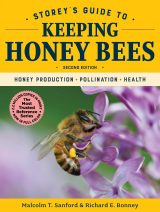 Storey’s Guide to Keeping Honey Bees: Honey Production, Pollination, Health (second edition, 2018) contains everything a beginner beekeeper needs to know to get started. At 200 pages, it is chock-full of very useful and fascinating information. The authors of the work are Dr. Malcolm T. Sanford, retired extension entomologist and professor emeritus, Department of Entomology & Nematology, Institute of Food and Agricultural Sciences, University of Florida, and veteran beekeeper Richard E. Bonney. Together, they cover a remarkable amount of information about honey bees, from the practical aspects of how to start beekeeping, to more advanced colony management practices.
Storey’s Guide to Keeping Honey Bees: Honey Production, Pollination, Health (second edition, 2018) contains everything a beginner beekeeper needs to know to get started. At 200 pages, it is chock-full of very useful and fascinating information. The authors of the work are Dr. Malcolm T. Sanford, retired extension entomologist and professor emeritus, Department of Entomology & Nematology, Institute of Food and Agricultural Sciences, University of Florida, and veteran beekeeper Richard E. Bonney. Together, they cover a remarkable amount of information about honey bees, from the practical aspects of how to start beekeeping, to more advanced colony management practices.
Read More
Posted in From the Library on September 13 2018, by Esther Jackson
Esther Jackson is the Public Services Librarian at NYBG’s LuEsther T. Mertz Library where she manages Reference and Circulation services and oversees the Plant Information Office. She spends much of her time assisting researchers, providing instruction related to library resources, and collaborating with NYBG staff on various projects related to Garden initiatives and events.
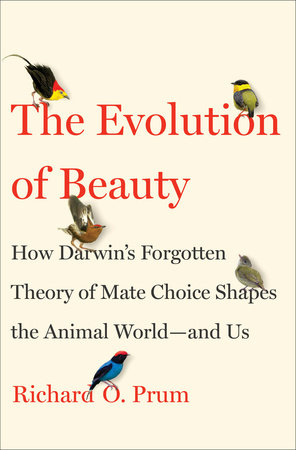 In The Evolution of Beauty: How Darwin’s Forgotten Theory of Mate Choice Shapes the Animal World—and Us, Richard O. Prum brings readers on a journey to understand the diversity of beauty in nature, and the evolutionary reasons for its existence. An ornithologist, Prum first focuses on avian ornamentation and attraction—a field with which he is intimately familiar; second on humans and our closer relatives—arguably a more theoretical undertaking. Prum follows Darwin’s theory of sexual selection which posits that “mate preferences can evolve for arbitrarily attractive traits that do not provide additional benefits to mate choice,” essentially (and very simplistically), a theory of beauty for the sake of beauty. While not necessarily at odds with Darwin’s theory of evolution, Victorian audiences rejected this theory based primarily on the disbelief that animals could discern beauty, and therefore disbelief that female individuals could use the metric of beauty to be agents of their species’ evolutionary progression.
In The Evolution of Beauty: How Darwin’s Forgotten Theory of Mate Choice Shapes the Animal World—and Us, Richard O. Prum brings readers on a journey to understand the diversity of beauty in nature, and the evolutionary reasons for its existence. An ornithologist, Prum first focuses on avian ornamentation and attraction—a field with which he is intimately familiar; second on humans and our closer relatives—arguably a more theoretical undertaking. Prum follows Darwin’s theory of sexual selection which posits that “mate preferences can evolve for arbitrarily attractive traits that do not provide additional benefits to mate choice,” essentially (and very simplistically), a theory of beauty for the sake of beauty. While not necessarily at odds with Darwin’s theory of evolution, Victorian audiences rejected this theory based primarily on the disbelief that animals could discern beauty, and therefore disbelief that female individuals could use the metric of beauty to be agents of their species’ evolutionary progression.
Read More
Posted in From the Library on September 6 2018, by Esther Jackson
Esther Jackson is the Public Services Librarian at NYBG’s LuEsther T. Mertz Library where she manages Reference and Circulation services and oversees the Plant Information Office. She spends much of her time assisting researchers, providing instruction related to library resources, and collaborating with NYBG staff on various projects related to Garden initiatives and events.
 These three new books in the Mertz Library focus on growing, foraging, and cooking edible plants. Each offers a different perspective on human and plant interactions, and will inspire readers to think about new recipes and garden ideas.
These three new books in the Mertz Library focus on growing, foraging, and cooking edible plants. Each offers a different perspective on human and plant interactions, and will inspire readers to think about new recipes and garden ideas.
Niki Jabbour’s Veggie Garden Remix: 224 New Plants to Shake Up Your Garden and Add Variety, Flavor, and Fun (2018) by gardener, author, and The Weekend Gardener radio show host (and creator) Niki Jabbour offers vegetable gardeners some new ideas to try alongside tried and true North American garden favorites. A laundry list of interesting varieties and cultivars, Veggie Garden Remix is a simple book, yet will be fun for those who like to try something a little different in their gardens. The book doesn’t include information about where to source particular varieties or cultivars from; readers may wish to investigate Seed Savers Exchange for hard-to-find recommendations.
Read More
Posted in From the Library on August 30 2018, by Esther Jackson
Esther Jackson is the Public Services Librarian at NYBG’s LuEsther T. Mertz Library where she manages Reference and Circulation services and oversees the Plant Information Office. She spends much of her time assisting researchers, providing instruction related to library resources, and collaborating with NYBG staff on various projects related to Garden initiatives and events.
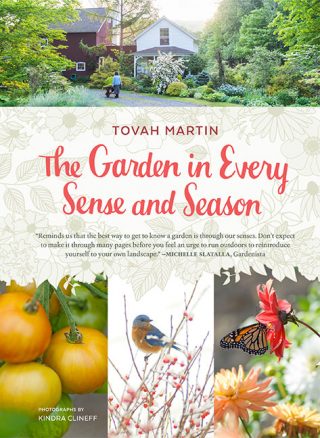 The garden as a place of meditation and connection to the natural world is a popular theme in garden literature. These three books emphasize the ways in which the garden can be a place of health—both for people and for other organisms.
The garden as a place of meditation and connection to the natural world is a popular theme in garden literature. These three books emphasize the ways in which the garden can be a place of health—both for people and for other organisms.
Anything written by Tovah Martin is a treat, and The Garden in Every Sense and Season (2018) is no exception. A chronicle of her garden throughout the year, it is a sensory journal—an experiential narrative that is evocative of gardens known, remembered, and imagined. This is not a step-by-step how-to book, but rather a window into Martin’s year in the garden. Readers will feel like they are following along as she completes her seasonal tasks, listening to thoughtful and confident advice about garden chores. While not every seasonal task is mentioned, Martin’s experience and advice offer insight into how she gardens and food for thought for others who are fortunate enough to do so as well. More text-heavy than most contemporary gardening books, it is in some ways a collection of sensory essays—the challenges and successes of a gardener’s year.
Read More
Posted in From the Library on August 14 2018, by Esther Jackson
Esther Jackson is the Public Services Librarian at NYBG’s LuEsther T. Mertz Library where she manages Reference and Circulation services and oversees the Plant Information Office. She spends much of her time assisting researchers, providing instruction related to library resources, and collaborating with NYBG staff on various projects related to Garden initiatives and events.
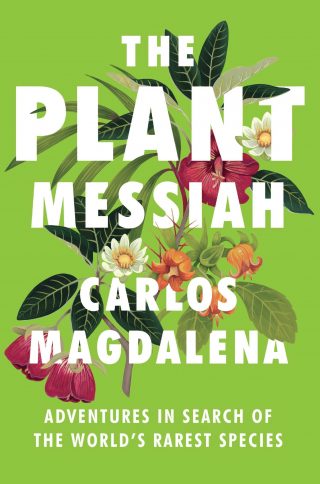 Within horticulture and botany, the genre of biography (including autobiography) is a popular one. Three new biographical titles are available for check-out in the NYBG Mertz Library and merit consideration.
Within horticulture and botany, the genre of biography (including autobiography) is a popular one. Three new biographical titles are available for check-out in the NYBG Mertz Library and merit consideration.
The Plant Messiah: Adventures in Search of the World’s Rarest Species is a memoir by Carlos Magdalena. Currently the Tropical Senior Botanical Horticulturist at the Royal Botanic Gardens, Kew, he was recently profiled in an excellent piece by People of London about his work with plant propagation and conservation. The Plant Messiah chronicles Magdalena’s trials and successes with propagating rare and endangered plants. His passion is sure to resonate with those who love plants and value biodiversity. A graduate of the Kew Diploma in Horticulture program, Magdalena’s experiences with “rescuing” species from the brink of extinction are fascinating and, at times, emotional. The text has a few minor errors (for example, type specimen receives a simplistic and technically incorrect definition), but they do not detract from the overall narrative. Readers will hold their breaths as attempts to propagate specific plants fail at first, but ultimately succeed. This memoir is best enjoyed by those who have some knowledge of plants (and can take some errors in stride), but even the general public will enjoy the adventure.
Read More
 Three new books in the Mertz Library show readers the breadth of possibilities available to the home gardener, from place, to ponds, to planting.
Three new books in the Mertz Library show readers the breadth of possibilities available to the home gardener, from place, to ponds, to planting.







